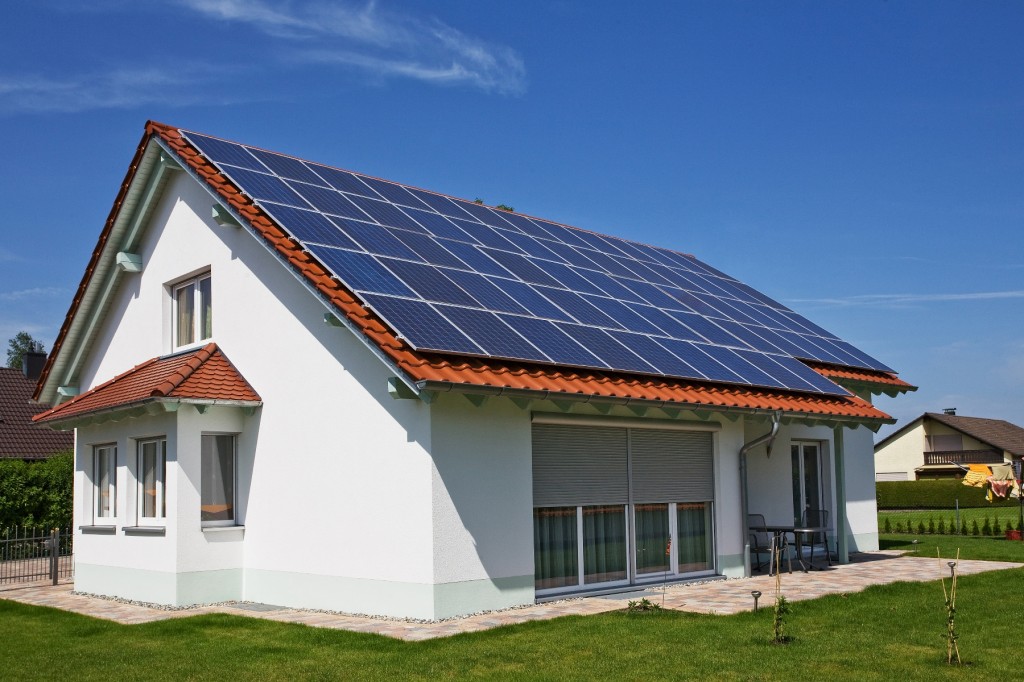Berkeley, CA — A new report prepared by analysts from the U.S. Department of Energy’s Lawrence Berkeley National Laboratory (Berkeley Lab) examines the potential impacts of customer-sited solar photovoltaics (PV) on electric utility profitability and rates. The report, entitled Financial Impacts of Net-Metered PV on Utilities and Ratepayers: A Scoping Study of Two Prototypical U.S. Utilities, shows that these impacts can vary greatly depending upon the specific circumstances of the utility and may be reduced through a variety of regulatory and ratemaking measures.
Adoption of distributed PV by residential and commercial customers has expanded rapidly in recent years, driven in part by the prevalence of net metering, a billing arrangement that allows customers to offset their usage with PV generation and receive credits against future usage for excess generation. Although distributed PV generation currently represents roughly 0.2 percent of the nation’s electricity supply, and no more than 1 to 2 percent in most states, widespread debates have surfaced about the financial impacts of distributed PV on utilities and their customers.
According to Berkeley Lab’s Galen Barbose, one of the report’s authors, “This work is intended to fill a gap in those debates by providing some concrete information about the potential magnitude of the financial impacts, by identifying the key conditions under which they may become more or less severe, and by evaluating possible strategies for reducing their severity.”
The analysis, using a financial model developed by Berkeley Lab, is based on two prototypical utilities – a vertically integrated utility in the southwest and a wires-only utility in the northeast – and estimates the possible financial impacts of distributed PV on both utility shareholders and ratepayers.
At PV adoption levels equal to 2.5 percent of total utility retail sales, which is greater than levels that currently exist in all but one state, Berkeley Lab found that distributed PV resulted in about a 4 percent reduction in shareholder earnings for each of the two utilities. The impacts on average retail electricity rates, however, were considerably smaller, with increases of 0.1 and 0.2 percent, respectively.
The study also includes a large number of sensitivity cases with alternate assumptions about the two utilities. As Andrew Satchwell, a co-author of the report, adds, “One important contribution of this work is to highlight the degree to which the impacts of distributed PV on utility shareholders and ratepayers can depend on particular details of the utility’s operating and regulatory environment.”
In considering a future in which distributed PV increases to reach 10 percent of total utility electricity sales – which is much greater than current adoption rates – the report estimates that shareholder earnings might be reduced by anywhere from 5 to 13 percent for the southwestern utility and by 6 to 41 percent for the northeastern utility. Those ranges reflect alternate assumptions about the utilities’ underlying load growth, rate structure, and other factors, as well as uncertainty about the degree to which distributed PV defers the need for utility capital investments in new generation, transmission, and distribution infrastructure.
A core purpose of the study was to evaluate measures that could be pursued by utilities and regulators to reduce the financial impacts of distributed PV. The report considered a large number of such measures, including changes to utility rate design and ratemaking processes, mechanisms that allow utilities to recoup revenues lost due to distributed PV or to earn profits on distributed PV, and a variety of other strategies.
As the report shows, a number of these measures could restore utility profitability to levels similar to what would occur in the absence of distributed PV, or could offset rate increases associated with distributed PV, or both. However, as Andrew Mills, another co-author of the report, explains, “The effectiveness of these measures often depends critically on how they’re designed, and in many cases, they involve important tradeoffs – either between utility ratepayers and shareholders or among competing policy objectives.”
As such, the report does not offer specific recommendations, but rather seeks to highlight important issues for utilities and regulators to consider as they weigh issues surrounding distributed PV and net metering.
The report as well as a summary briefing may be downloaded here or from http://emp.lbl.gov/publications.
A webinar presentation of key findings from the report will be conducted on Thursday, October 9th at 10:00 am Pacific Time. Register for the webinar here.
The research was supported by funding from the U.S. Department of Energy SunShot Initiative. The SunShot Initiative is a collaborative national effort that aggressively drives innovation to make solar energy fully cost-competitive with traditional energy sources before the end of the decade. Through SunShot, DOE supports efforts by private companies, universities, and national laboratories to drive down the cost of solar electricity to $0.06 per kilowatt-hour. Learn more at energy.gov/sunshot.
# # #
Lawrence Berkeley National Laboratory addresses the world’s most urgent scientific challenges by advancing sustainable energy, protecting human health, creating new materials, and revealing the origin and fate of the universe. Founded in 1931, Berkeley Lab’s scientific expertise has been recognized with 13 Nobel prizes. The University of California manages Berkeley Lab for the U.S. Department of Energy’s Office of Science. For more, visit www.lbl.gov.

